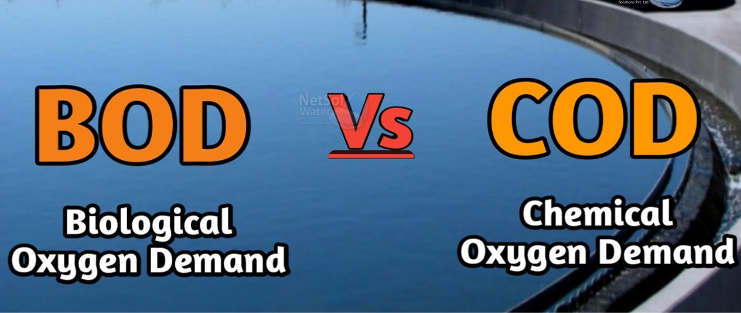When detecting water quality, chemical oxygen demand ( COD ) and biochemical oxygen demand ( BOD ) are two important indicators for measuring the content of organic pollutants in water and their potential impact on ecosystems. They have different measurement principle, reaction speed, measurement range, application field and data interpretation. BOD is a biological oxidation process in wastewater or water, and COD is a chemical oxidation process. Biological oxygen demand is performed by using aerobic organisms, while chemical oxygen demand is performed by using chemical reagents. There is a high correlation between them. Here is the specific difference between the two :

Measuring principle :
COD : COD is calculated by measuring the amount of oxidant consumed by oxidizing organic pollutants in water samples into inorganic products using chemical oxidants ( such as permanganate, potassium dichromate, etc. ) under acidic or neutral conditions.
BOD : BOD is calculated by measuring the amount of oxidation of organic pollutants by microorganisms at a certain temperature and time by providing organic pollutants in water samples to microorganisms ( usually bacteria ) as a biodegradable substrate.
Reaction speed :
COD : Due to the use of chemical oxidants, the measurement process of COD is usually relatively fast, which is suitable for the situation where results need to be obtained quickly.
BOD : BOD requires a long incubation period, because microorganisms need a certain amount of time to degrade organic pollutants, so it usually takes 5 days to 7 days. This also makes BOD measurements less suitable for real-time monitoring, but more representative for assessing the potential impact of organic pollutants in water on ecosystems.
Measurement range:
COD: COD can measure organic pollutants with low to high concentrations, and is usually suitable for monitoring industrial wastewater, municipal wastewater, and other high concentration organic pollutants.
BOD: BOD is mainly used to measure low concentration organic pollutants and is usually suitable for monitoring natural water bodies and water bodies with high requirements for biological survival.
Application field:
COD: COD is usually used to evaluate the total amount of organic pollutants in water bodies and is suitable for monitoring high concentration pollutants such as industrial wastewater and municipal wastewater. COD is sensitive to high levels of organic matter in water bodies, but it is relatively less effective in assessing the actual impact of organic pollutants on ecosystems and aquatic organisms, as COD cannot distinguish between the biodegradability and potential toxicity of organic matter.
BOD: BOD is mainly used to evaluate the content of biodegradable organic matter in water bodies, and is usually suitable for monitoring water bodies such as natural water bodies, lakes, rivers, etc. that have high requirements for biological survival. BOD can reflect the biodegradability of organic matter in water under natural conditions, making it more suitable for evaluating the actual impact of organic pollutants on ecosystems and aquatic organisms.
Test results:
COD: The COD value usually represents the total amount of organic pollutants in the water sample, but it cannot directly infer the biodegradability or potential toxicity of organic matter. A high COD value may indicate heavy organic pollution in the water body, but it does not necessarily mean a significant impact on the ecosystem.
BOD: The BOD value usually represents the content of biodegradable organic matter in the water body, which can indirectly reflect the self purification and biodegradability of the water body. A higher BOD value may indicate a strong biodegradability of organic matter in the water, while a lower BOD value may indicate a weaker biodegradability of organic matter in the water, which may have an impact on the ecosystem.
In summary, there are differences between COD and BOD in measurement principles, reaction rates, measurement ranges, application fields, and data interpretation. COD is mainly used for rapid assessment of the total amount of organic pollutants in water bodies, and is suitable for monitoring high concentration pollutants; BOD is mainly used to evaluate the content of biodegradable organic compounds in water bodies, and is suitable for monitoring water bodies with high requirements for biological survival. In practical applications, selecting appropriate indicators or combining measurement results based on monitoring purposes and needs can provide a more comprehensive assessment of the degree of organic pollution in water bodies and potential impacts on ecosystems.
最新动态
相关推荐